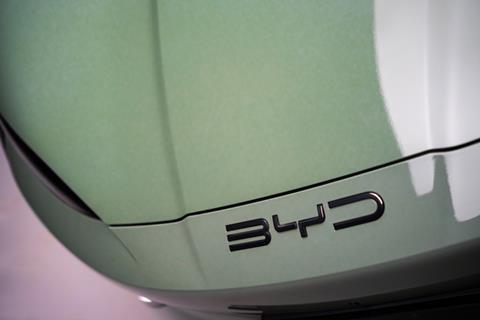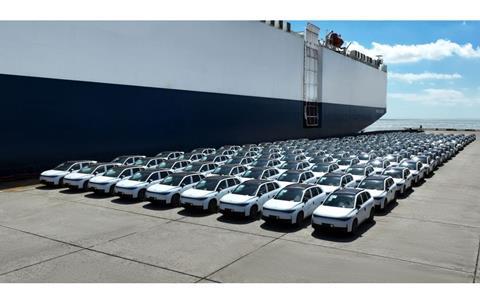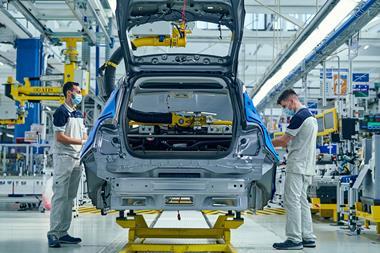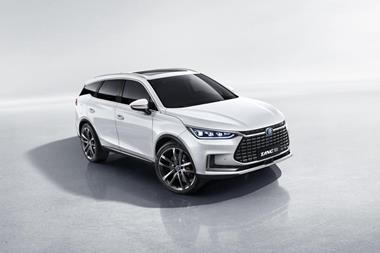China’s economy is slowing, and the US is threatening high tariffs on Chinese imports. Against this backdrop Chinese OEMs are looking to expand operations in Europe. Ian Henry examines the opportunities and challenges.

BYD has two all-new factories under construction, in Hungary and Turkey, each will begin life with 150,000 units’ annual capacity. Expansion at one or both sites in future is probable, as are additional BYD plants in Europe. Already heading towards a production running rate of 5m vehicles a year, BYD wants to achieve half of its global sales from markets outside China. Even assuming that some of this will continue to emanate in China, there will need to be significant expansion of BYD’s facilities, including in Europe, for this objective to be realised.
Chery meanwhile will begin producing vehicles in the former Nissan plant in Barcelona during 2025. Its reported volume plans are well over 100,000 pa, well above what Nissan was making before the plant closed. Leapmotor, a new player in China, has seen Stellantis take a stake in the company and Leapmotor vehicles are now being assembled in Poland. There have been press reports that Leapmotor is looking at other European production sites, in Slovakia and, surprisingly, Germany. The long run replacement for the Fiat 500 electric model is expected to be made on a Leapmotor platform too.
The fourth Chinese company with a growing presence in Europe is Geely, but to date this has been limited to the LEVC taxi and van factory in Coventry, UK and direct investment in a new Volvo plant due to open the second half of the decade.

Geopolitics and tariffs present problems
For these companies, their European plans are either certain or in the process of becoming close to certain. Elsewhere the situation is more nuanced, complicated by the EU’s investigation into subsidies for Chinese EV production and the imposition of additional tariffs on top of the standard 10% tariff on imports from outside the EU. For some Chinese vehicles, the total tariff payable could be as high as 35%.
A further complication has come with the Chinese government asking its domestic companies to retain core EV technology at home in China or to stop investing overseas. Dongfeng, which is partly state-owned, has reportedly stopped assessing potential sites in Italy, while SAIC has also slowed its interest in possible European locations. A few months ago, Chery and Dongfeng were said to be close to announcing new factories in Turkey. While Chery, a private company, may well still press ahead with a factory there, for Dongfeng and SAIC, Chinese government pressure is likely to mean that investment announcements for Europe are unlikely in the near future.
National brand identity less important
In the long term, Chinese car companies are highly likely to become at least the equals of the Japanese and Koreans in Europe. Across Europe, consumers are far less nationalistic in terms of car buying than they once were. Fiat sales in Italy have dropped dramatically in the last few years, especially this year, and the association of brands with production in their traditional home country is being broken all the time. For example, most Citroen passenger vehicles are made outside France and Lancias, originally made in Italy but What more recently made in Poland have switched production to Spain. Meanwhile production in Hungary by Audi, Mercedes and (soon) BMW is strong and rising, without impacting consumer behaviour in a negative way. These developments reflect a number of things, not least the need for even premium brands to seek lower cost production locations if possible.
They also suggest that consumers are increasingly less worried about the apparent nationality or national affiliation of a particular badge on a car, and more interested in value for money, the availability of modern technology and features, rather than where it is made. Chinese consumers have begun to wean themselves off international brands, not least because domestic brands are beginning to offer features and quality levels which exceed those offered by international brands. A similar thing is likely to happen in Europe, but in reverse. European consumers are taking to Chinese brands, currently imported, but soon to be made in Europe.
Within a few years, BYD is likely to be producing over 250,000 units a year in Europe, and Chery planning to make close to 100,000 if not more. Other Chinese brands are not far behind in terms of their European plans. In some cases, Chinese technology will be used for European brands, without using the Chinese name (for example with Leapmotor platforms forming the basis of future Fiats) and in some cases, e.g. at Volvo plants, Chinese brands may be made by European manufacturers with spare capacity. Within a decade it would not be surprising to see 1m or more vehicles from Chinese brands made in Europe and when this happens, as it surely will, what will this mean for European companies? More plant closures, brands disappearing and a lower market share all seem inevitable; it is just the scale of the change which remains to be clarified.






































No comments yet